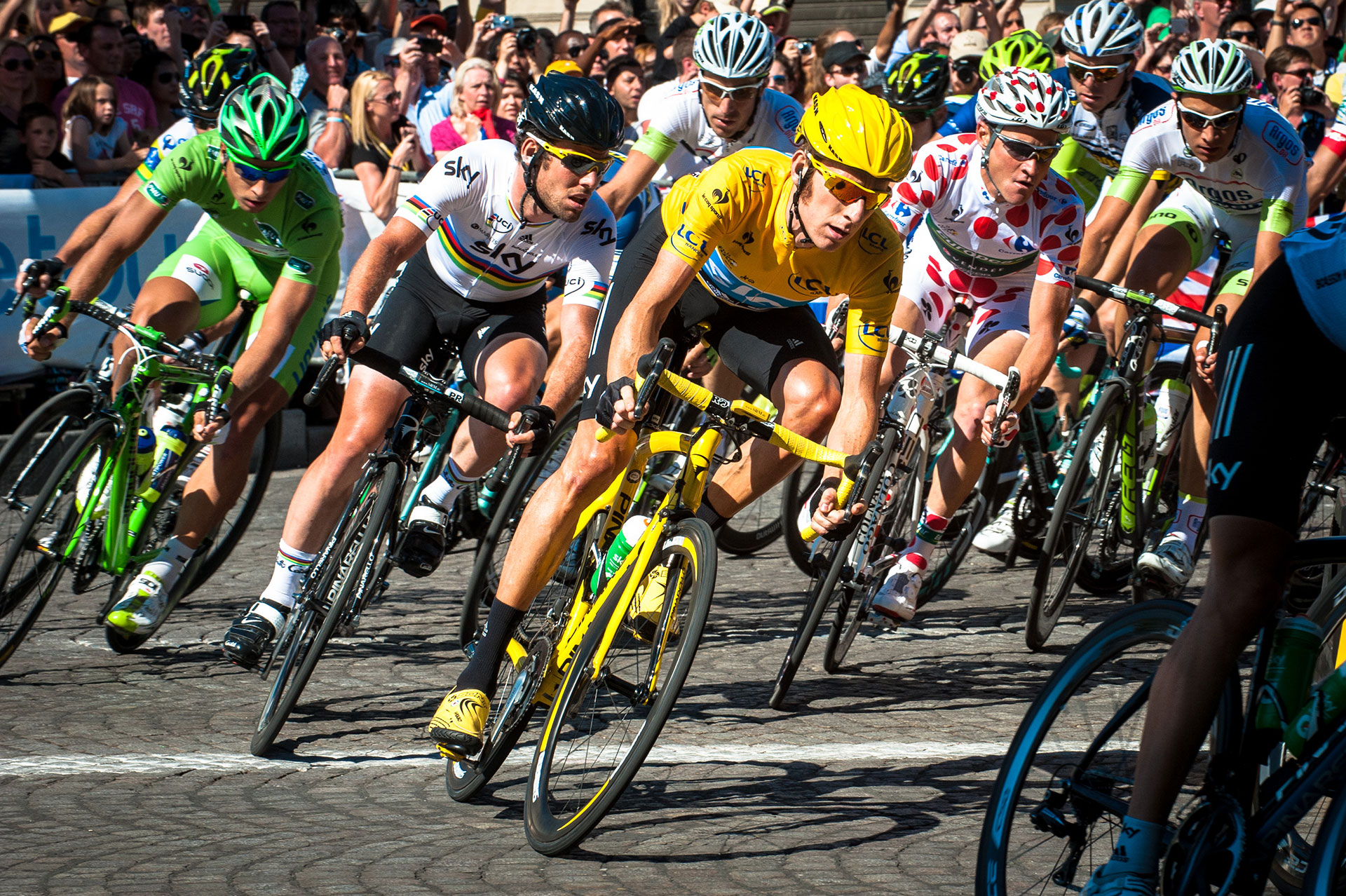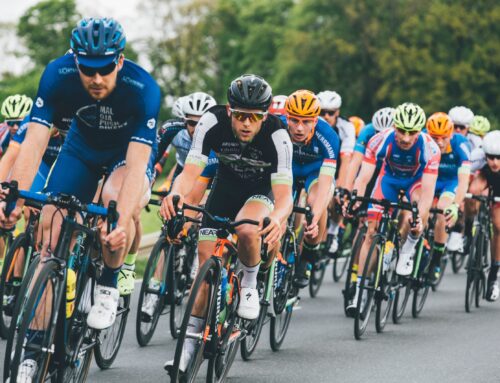What’s it all about?
The Tour de France, one of the most prestigious cycling events in the world, is a captivating spectacle that showcases the thrill of elite and competitive men’s cycling. The 23-day race, consisting of 21 daily stages (yes, there are a couple of rest and recovery days in there) and winds its way around a different route in France each summer.
To the uninitiated it can all be somewhat confusing. In the myriad of team colours and branding, flat stages and mountain climbs, time trials and points, time penalties and bonuses and, through it all, lots and lots of talk about jerseys.
So, if you’ve ever wondered why there’s so much talk about the yellow jersey, or spotted a polka-dot clad rider, then here’s the low down:

The Yellow Jersey: The Ultimate Prize
The iconic Yellow Jersey, or Maillot Jaune, is the big one. It’s worn by the rider who has the fastest net time across the entire Tour – not necessarily the rider who finished first in the last daily stage. Yellow jersey wearers have to be great all-rounders: good at climbing, good at sprints and so excel at pretty much everything. The jersey usually changes hands fairly regularly across the Tour as riders’ stamina, speed and endurance is tested across more than 3500 km of road.
The Green Jersey: Speed, Skill, and Sprinting
The Green Jersey, or Maillot Vert, is worn by the rider with the most points at the end of each daily stage. Points are awarded for getting across the line first, and at specific ‘intermediate sprint’ check-point sections within each stage so the green jersey wearer is usually, but not always, one that excels at sprinting. Cycling sprinters, very much like their athletic track counterparts, need to be able to turn on the explosive burners quickly to get up to speed so leg power is all important. However, with 176 riders on the Tour, and many jostling for position, it takes a keen mind and tactical brain to stay out of danger and get to the front.
The Polka Dot Jersey: Climbing to New Heights
The Polka Dot Jersey, or Maillot à Pois Rouges, is awarded to the “King of the Mountains”; the rider who reaches the summits of the designated mountainous sections of the Tour first and so gains the most points along ( and up, down and up) the way. This is all about strength, grit and lung-busting determination and, with climbers tending to be leaner, lighter and wirier than their thigh-muscle bound sprint experts, demonstrates how different aspects of cycling have different physical demands.
The White Jersey: Riding into the future
The White Jersey, or Maillot Blanc, is awarded to the best young rider in the general classification. It’s fundamentally an under 25’s version of the yellow jersey and represents the future of cycling, celebrating the potential and promise of young athletes.

It is technically possible that the overall Tour de France winner may not have won the right to wear any of the jerseys during the event : something that makes following the event so addictive. What are the team tactics? How will yesterday’s Green Jersey winner manage the mountains? Will the sole sprinter manage to last the distance to the finishing post – or will he be caught?
It’s immersive and fascinating to watch as well; a colourful spectacle of physical and mental strength.
Don’t forget the Tour de France Femmes; the women’s equivalent of the Tour de France. Re-ignited and reinvented for 2023, it starts on the day the Tour finishes with 8 days of racing and yes, the same 4 jerseys colours will be up for grabs.






